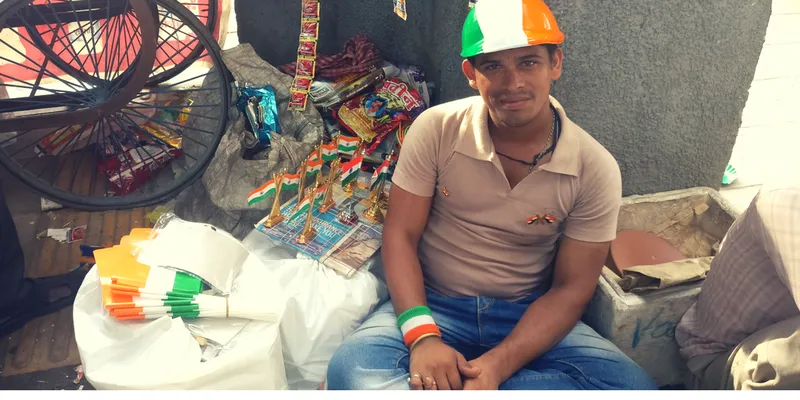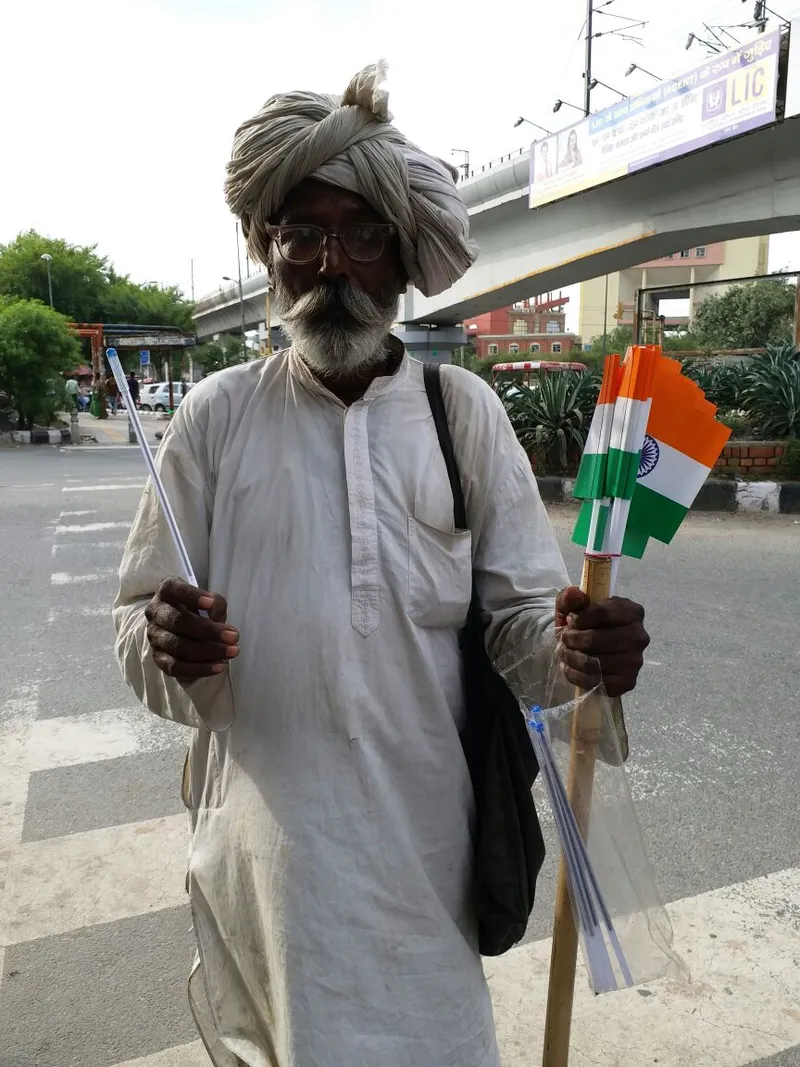The tricolour on our streets: Independence Day through the eyes of street hawkers
The street hawkers of Delhi and Kolkata, the current and former capitals of India, await national holidays in the hope of associating with the nation’s legacy and pride through tiny artefacts.

Two cities, Delhi and Kolkata, the current and a former capital of India, have perhaps witnessed the independence struggle more closely than other Indian cities. The narrow alleys and wrinkled faces one encounters in these places carry the tales and emotions of both pre and post British Raj. While the slogan of ‘Inqalaab Zindabad’ roared on these streets once, today the calls of ‘aazadi’ and ‘dus ka ek’, are drowned in a sea of honking cars.
We earn a maximum profit of Rs 200 per day. Be it pens, flags, or tricolour-coated toys, all these items mean the same — a way to earn a living. And the nationalism sentiment is on a high now — after all, we are celebrating our aazadi (freedom), says 62-year-old Ramlal as he strolls through Delhi’s scorching streets.
Patriotism for livelihood
As we say hello to the fourth and fifth generation of post-Independence India, the clarion call for the celebration of nationhood, August 15 and January 26, spreads cheer primarily among the small street hawkers and vendors.
In the present capital every red signal is painted with saffron, white, and green with a hint of blue. Delhi abounds with new-age tricolour artefacts, but the tiranga flag continues to be the main attraction for buyers.
The flag is a symbol of the nation and patriotism. The tiranga fills me with pride and my customers want to celebrate August 15 by buying the flags. They don’t even bargain beyond Rs 10; after all, it does not look good, says 30-year-old Radhya.
He started engaging in this trade of selling symbols of the freedom struggle and representations of “patriotism and bhaichara” (brotherhood) in the form of tiny tricolour trinkets, car accessories, plastic flags, and stickers from August 11. The flags come in two sizes. The big cloth tricolour sold for Rs 75 at auto junctions, later sitting proudly on top of the vehicles, waving to the citizens as the motor zooms — sorry, crawls — through the city traffic.

Strolling towards East Delhi, outside the metro station, 35-year-old Vishnu Uday Kumar from Bihar has devised a new way to attract customers — he is selling tricolour caps for school children.
Independence Day is the flavour of the season now. We live in Hindustan and these items highlight our nationhood. Tricolour caps are a hit; they even save children from the Delhi heat, he quips.
The veteran, who has been in this business since the age of 17, says that the business is slow and he hasn’t been able to earn more than Rs 250 in the past two days, but he assures me that it will pick up in the next two days. Other days, these hawkers engage themselves in the sale of flowers, car accessories, phone chargers, and magazines.
Read More:
The Bose family and Netaji’s escape
At 99, this freedom fighter from Bengaluru hasn't stopped fighting for causes
Independence Day — a festival
Travelling back to the colonial capital of British Raj India, Bowbazaar Street in old Kolkata is buzzing with festivities. Walking along a dirty, muddied, crowded pavement, a stall selling Independence Day wares is spotted. Plastic flags, paper flags, big cotton ones, flag car décor, and badges. The owner, Swapan Sau, a man in his late 30s, informs us about the price as soon as we reach his spot. The plastic flags cost Rs 2 each, and the paper ones Rs 5.

As the city prepares herself for the national celebrations ahead, Swapan wonders whether the hype around this day is even required, given the country’s current circumstances.
He gestures at an adjacent stall and says, “You will get things for all festivals here.” He adds,
Independence Day is not a festival. All this is because some people laid down their lives. Those times are coming again, given all the wars everywhere.
When asked if he makes the flags himself, he laughs. “No! Where do we have the time? We buy these from the China market.” He means the old Chinese settlements in Kolkata which also double up as markets for cheap goods. As we leave he laments that he could not hang a larger flag at his stall because of the rains. “It would have looked nice.”
Tricolour business is profitable, slightly

Almost across the city, the prices are standard — Rs 5 for the plastic flag, Rs 10 for the tricolour flag stand car accessories, Rs 40 for a medium-sized cloth flag, and Rs 75 for the large tricolour. An initial investment for procurement of goods at Rs 5,000 in Saddar Bazaar, in Old Delhi, brings them a maximum sale of Rs 8,000–Rs 10,000.
While the profit margin remains grim in this business, the street hawkers hope the national fervour takes over the Dilliwalas on I-Day and, in turn, they get to send some money back home.
The sale is low and we don’t have any way out. We have to eat our food, take care of my younger brother. Sale of these items is my only hope for survival. We don’t have any access to facilities or jobs. But this is our life and this has been happening for generations now, says Karan, Radhya’s group member.
These street hawkers cheer and await the national holidays, in the hope of associating with the nation’s legacy and pride through tiny artefacts. They refuse to be deterred by or dwell on impact of seven decades of freedom on their livelihood. Rather, they carry a sense of pride and excitement which is a by-product of three colours combining to give shape to the diversity and idea of India.
One cannot but wonder what 70 years of freedom mean to a country. Is one to be glad that the celebration of that hallowed day provides some sustenance to many — that it has created an industry around it? Or is one to abhor that industry, for it is poverty and exploitative politicisation that has created it, and that is in contrast to the spirit of freedom?
Enter the SocialStory Photography contest and show us how people are changing the world! Win prize money worth Rs 1 lakh and more.Click here for details!







